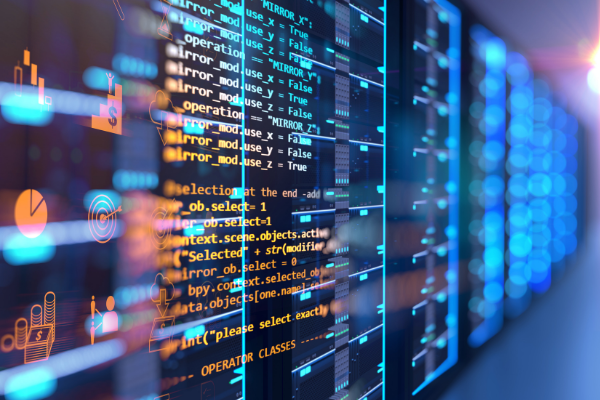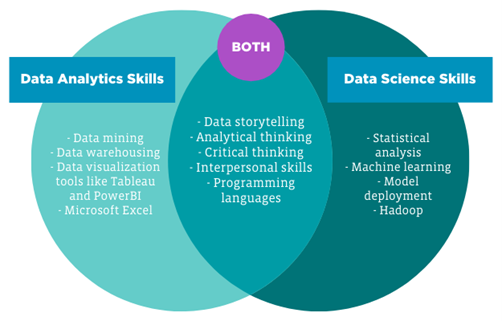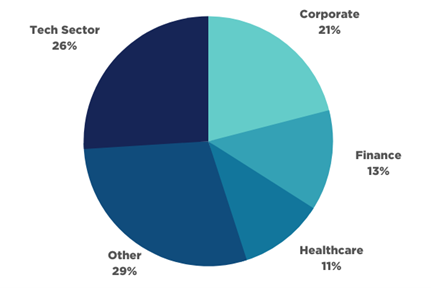
Collecting data is not a new phenomenon. Organizations worldwide have been doing it for quite some time. But lately, these organizations are putting a newfound emphasis on what they do with this data. That’s where data analytics and data science come in.
Even though these two terms are often thrown around in the same context, they do have different definitions. While both occupations work with data, the main difference is in what they do with it. Read on to learn the difference, what it’s like to work in both fields and the skills you need to get there.
Working as a data analyst is different than working as a data scientist. The objective of both roles is the same, to extract meaningful insights from data to strengthen business decision making. The main difference lies in the tactics each uses to achieve this.
Data analysts examine large datasets to identify trends, forecasts and data visualizations to tell a compelling story through actionable insights. These insights help stakeholders make informed decisions according to business needs.
Data scientists are tasked with designing and constructing new processes for data modeling using algorithms, predictive analytics and statistical analysis. Data scientists have the technical skills to arrange unstructured data and build their own methodologies and frameworks.
There are key differences between the two roles, but they share the same goal: To translate data analysis into business intelligence.

The simplest definition of data analytics is reviewing raw data and drawing meaningful insights to solve business problems. The IT industry typically recognizes four types of data analytics: Descriptive analytics, diagnostic analytics, predictive analytics and prescriptive analytics. Each type of data analytics answers a specific question.
These types of data analytics are performed using a variety of tools and techniques that vary based on the type of analysis and objective.
While data analysts are focused on understanding the data, data scientists are responsible for building models and designing frameworks that will gather and analyze data. Typically, data scientists rely on a mix of techniques that include data mining, statistical methods and machine learning algorithms to accomplish this.
Unstructured data is just as it sounds – unorganized and unusable until it is processed. Data scientists are charged with cleaning this data and processing it. They rely on classification, categorization and sentence chunking to make sense of unstructured data.
Once the data is collected there can be many variables to consider. Regression analysis is one statistical method that allows data scientists to explore the relationship between these variables. Correlation analysis is also used for both qualitative and quantitative data.
Data scientists use machine learning algorithms to predict, categorize and classify data with minimal chance for error. There are three main sets of machine learning algorithms:
Again, there are many techniques and models that data scientists use to find the right data. These are simply a few of the most common.
A day in the life of a data analyst can vary depending on the type of company and their business objectives. The extent to which the company relies on data-driven insights to make decisions will also affect the day-to-day life of a data analyst.
In general, a data analyst will do the following:
Data analysts must understand statistics and how databases work. They must also have the ability to visualize data points and then explain their findings to stakeholders.
While each project is different, the commonality is that data scientists work closely with business stakeholders to understand how big data can be used to accomplish business goals. There’s an established process that data scientists follow.
Typically, the process looks something like this:
Data scientists follow this process time and again to solve different issues within the organization. Once the process is complete, it’s time to repeat it on a new project.
While we've been concentrating on the differences between working as a data analyst and a data scientist, you might be surprised to see that there is some overlap in education requirements, work experience and skills.
Data Analyst | Data Scientist | |
Education Requirements | Degree in data analytics, data science, computer science, applied mathematics or statistics | Degree in computer science or math and possibly an advanced degree in data science or data analytics |
Work Experience | Experience working with data in a business context | Background in mathematics and statistics |
Technical Skills | Programming languages like SQL, R, Python; Microsoft Excel; data visualization tools like Tableau and PowerBI; data wrangling; data warehousing | Statistical analysis; machine learning; coding; Hadoop; programming languages like Python, SAS, R, Scala |
Professional Skills | Data storytelling, analytical thinking, critical thinking, interpersonal skills | Data storytelling, business intuition, analytical thinking, critical thinking, interpersonal skills |
Just because you don't have a degree in computer science doesn't mean you can't get into the data field. If you're in a function like marketing, finance or business operations and routinely work with data to drive business decisions, you could pivot to a data-specific role, like data analyst or data scientist. Specialized training - including online training, bootcamps and certificate programs - can help you get the skills you need to move into one of these roles. Add on a certification that tests your knowledge and proves you have the skills you learned, and you'll be an attractive candidate to employers looking to meet the high demand of data professionals. Learn more about the best data analytics certifications.
The U.S. Bureau of Labor Statistics reports that employment of all computer and information research positions is expected to rise by 16% by 2028 - a rate that exceeds many other professions.
The average annual salary of a data analyst ranges from $60,000 to $138,000 based on reports from PayScale and Glassdoor. That’s a pretty big range, and it makes sense as data analyst roles can vary depending on the size of the company and the industry. Data jobs at technology and financial firms tend to pay higher. It's also important to note that a data analyst is often considered a steppingstone to a more advanced role. PayScale reports that many data analysts move on to roles like senior data analyst, data engineer or data scientist.
A data science career can be extremely lucrative. Robert Half Technology's 2020 Salary Guide lists the average annual salary for a data scientist between $105,750 and $180,250. Of course, this figure will vary depending on years of experience, location and industry. A University of San Diego report shows that 26% of all data scientists work in the technology sector, 21% work in a corporate setting, 13% work in financial services and 11% work in the health care industry.
 See how much you could earn with the CompTIA IT Salary Calculator!
See how much you could earn with the CompTIA IT Salary Calculator!
The good news is you don’t have to choose. If you’re just starting out, you can work your way to a data analyst position and eventually land a data scientist position. Your career path is personal. You should take factors like your experience, your interests, your strengths and your dreams into account.
What experience do you already have?
Take inventory of the skills you already have. Do you have some of the technical skills listed in the table above? Do you have some professional skills that will
easily transfer to a data science career? List out your strengths and then plan for your weaknesses. What don't you know? What do you need to learn and how will you acquire that knowledge? Taking a personal inventory is the first step
toward creating a career path.
What interests you?
A career in data requires an interest in math, statistics and analytics. If you're more interested in IT infrastructure, a career in database administration would fit. Or, if you are more artistic, a career in data visualization could work.
Of course, a fondness for numbers isn’t the only requirement. A general curiosity and a knack for problem solving via critical thinking is what will make you successful in this field. A keen business sense will also serve you well. Understanding
how businesses flourish will steer you to the right data source.
What are your goals?
When you’re planning a career there’s something to be said for experience and passion. But another big component is ambition and compensation. Most people desire a career that will not only personally fulfill them, but will also provide
financial security and offer opportunity for growth. This is an important piece of the puzzle. Do your homework and plan for a career that will meet these needs.
You’re the only one who can decide which job is right for you. The good news is that there really isn't and wrong choice. Data-focused careers are in-demand across industries in every location. If you're qualified, you should be able to find a position.
CompTIA Data+ covers the skills you need in data analytics. Start gaining skills like data visualization, data mining and more with CompTIA CertMaster Learn + Labs for Data+. Sign up for a free trial today!
Read more about Data and Analytics.
Tags : Data and Analytics